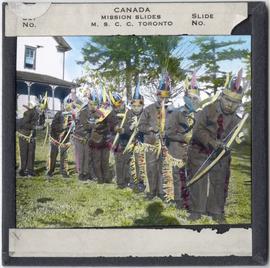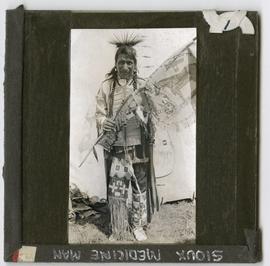Collection consists of 48 glass lantern slides (29 of them tinted) and 2 negatives. The lantern slides include images related to four Residential Schools: Elkhorn (Manitoba), St. Michael’s (British Columbia), Shingwauk (Ontario), and Choutla (Yukon).
Collection includes images of the schools, classrooms, and different areas of the buildings (dining room, kitchen, etc.); the staff, students, and families engaged in different activities; and surroundings of the schools (cemeteries, churches, villages, etc.). Collection also includes images of landscapes and two images unidentified villages.
Collection might be similar to the Missionary Society of the Church of England in Canada fonds, at the Anglican Church of Canada Diocese of Rupert's Land, Manitoba.
Lantern slides shows were used during the 1920s and 1930s by the Church of England in Canada to promote the work of their missionaries and to raise funds. The slide shows took place during missionaries’ services, church services, Sunday school groups, and special church programs. Usually, the slide shows were complemented with a text with basic commentary on the mission and content of the slides.




